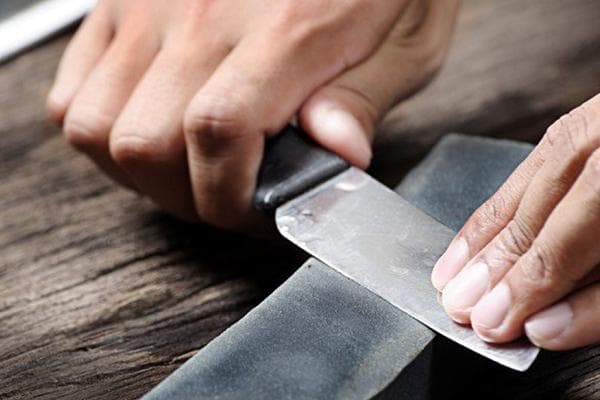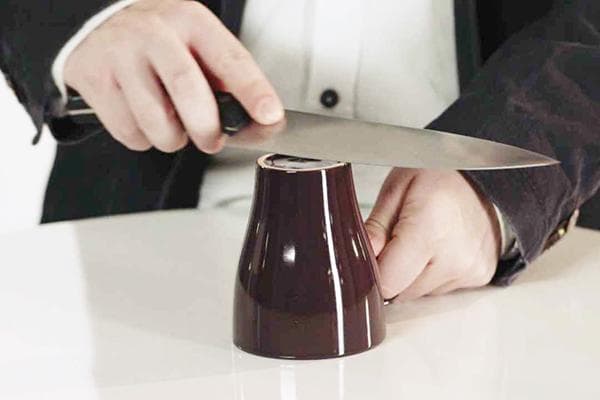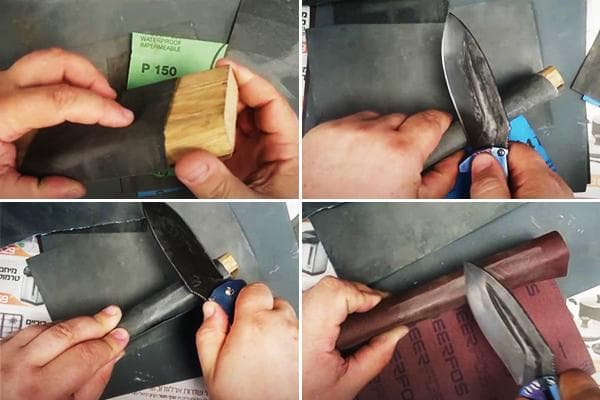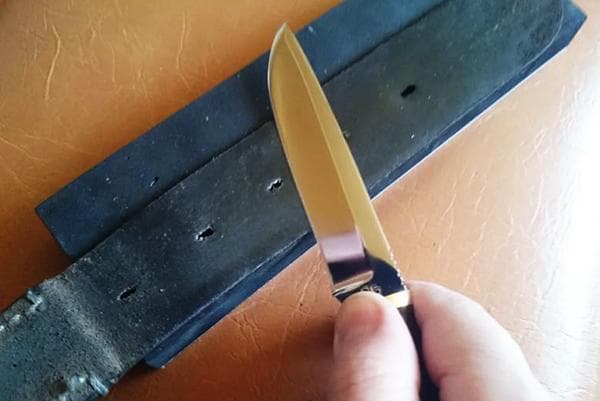9 ways to sharpen a knife with improvised means - without a whetstone or a whetstone
Content:
In a kitchen where there are only dull knives, it is difficult to prepare anything other than tea. Before cutting vegetables, meat, fruits, sausage, you need to sharpen the knife. And it is not at all necessary to have a whetstone or other special device for this. Previously, improvised means and methods were used for sharpening. We invite you to familiarize yourself with them.

4 rules for sharpening knives
To begin with, it is worth clarifying that knives are edited and fine-tuned using improvised means. Sharpening involves removing a layer of metal using highly abrasive means, and it cannot be done at home without special tools. Moreover, you need to know how to sharpen knives with a whetstone: correct choice of sharpening angle, positioning of hands and their movements during work. Editing and finishing eliminate dents and defects on the blade. Due to this, it becomes sharper and begins to cut well.
What you need to know to sharpen a knife yourself:
- Cutting edge angle. All knives are factory sharpened. It is important to maintain the angle of the cutting edge, otherwise you may damage the blade. Usually it is 10–30 degrees.
- Hand movements. The knife is sharpened with sliding arc-shaped movements away from you.They must be done at the same angle. Don't rush: fast and sudden movements will not speed up the process.
- Slip. The better the blade glides, the faster it sharpens. You can drop some oil on it. And if you use a stone for sharpening, it is recommended to first dip it in water. During the process, you need to periodically re-wet the stone. You can pour water on top from a bottle about every 1-2 minutes.
- Blade sharpness. The thin and ultra-sharp blade quickly becomes dull. A coarser sharpening is much healthier for both the knife and the food. Acting like a saw, it additionally affects dietary fiber. A knife for fish is brought to a razor sharpness, and for fruits, vegetables, and meat, the blade is sharpened in moderation.
9 ways to sharpen a knife without tools
At home, you can make almost any knife sharper: large, small, curly, with serrations. The exception is a ceramic knife, the blade of which is made of very durable zirconium dioxide. It is inferior in strength only to diamond and requires a diamond-coated tool to sharpen it.
Sharpening with stone or brick
A piece of rock is the most obvious tool at hand with which to sharpen a knife. A special sharpening stone is superior only in ease of use.
For sharpening, choose the most smooth and flat stone possible. It is placed nearby and, holding the blade at an angle of approximately 25 degrees, they make sliding movements away from themselves.
Two knives
In many films you can see how knives were sharpened before - against each other. You need to pick up a knife and slide one blade along the second. After about 10 minutes both will become sharper. This method is great for sharpening cutlery knives for meat and fish.
For the future: for home use it is better to get a medium-grained whetstone. It does not require special knowledge or skill to use, unlike various sharpening units or grinding stones.
Saucer
Sharpening is done on a rough ceramic edge. For convenience, the saucer is turned upside down. It is best to place it on the table with a waffle towel. The plate will not move on it, and you can easily sharpen the blade.
Sandpaper
To sharpen a knife you need fine sandpaper. It can be used in 2 ways:
- In the first option, a piece of sandpaper is tightly wrapped around an oblong object (for example, a lighter) and rubbed on the blade at an angle.
- In the second option, secure the sandpaper around the tip with tape and move the knife back and forth.
Sharpening a serrated knife using a file
To sharpen a bread knife or others that have serrations, you can use a rounded file. It is inserted into each recess and short stroking movements are made in the direction away from you.
As a rule, one side of the blade is sharpened with a file - the one where the edge of the teeth is beveled. The other side is sharpened with sandpaper, on a saucer or in any other available way.
Sharpening on a leather belt
This is an old, ancient method. But it only works with belts made of thick genuine leather. In order to sharpen a knife, you need to pull the belt as tight as possible and move the tip along it with sliding movements. For example, you can wrap it around your hand.
Paste GOI
GOI paste contains abrasive substances that will help sharpen the blade. It needs to be heated with a lighter or hairdryer, applied to a thick cloth or a piece of belt, pulled tight and rubbed on the knife for 5–7 minutes.
You should choose a green or black-green paste (medium or fine grain). A small block costs about 50 rubles. It will be enough for 20-30 sharpenings.
Concrete step
If you don’t have sharpening equipment at home, ordinary concrete, or, more precisely, a step, will help out. It is most convenient to sharpen a knife on its rounded corner. Wet the concrete step with water and use a sliding motion to sharpen the blade.
Wet sand
Sand grains can act as an abrasive. To make your knife sharper, take pinches of wet sand and rub the blade. The second option is to dip a wet stick into the sand. Grains of sand will stick to it. Sharpening with a stick will be much faster.
Despite the variety of “folk” options, it is better to have a special device for sharpening knives at home. The easiest to use is a whetstone - a whetstone. The means at hand only temporarily solve the problem. They straighten the blade, but can also damage it. Use old-fashioned methods wisely and follow the sharpening rules. It is important!


